flying car
Latest
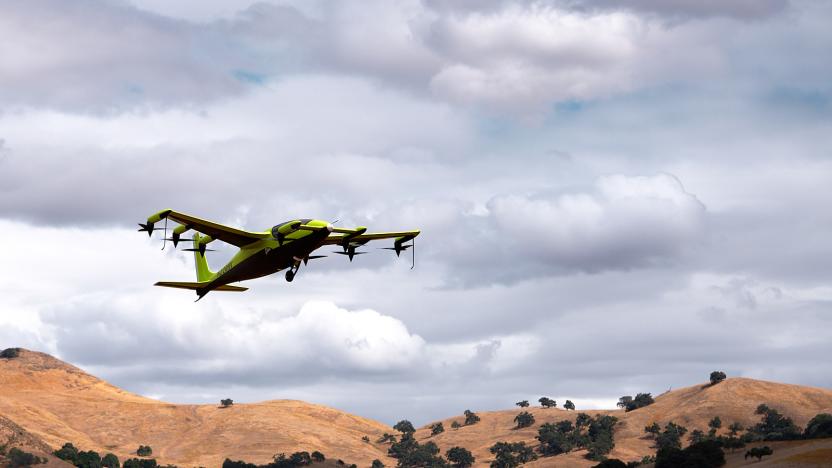
Larry Page’s Kitty Hawk air taxi startup is shutting down
After more than a decade of trying to make flying cars a reality, Kittyhawk is shutting down.
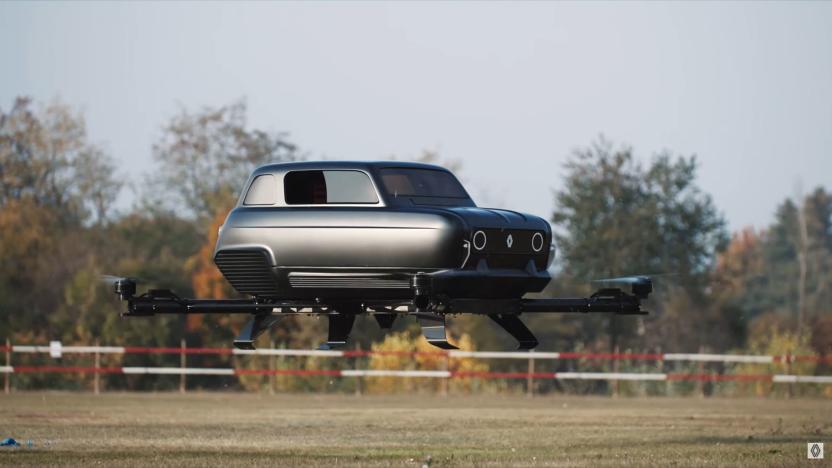
Renault's cult '4' reimagined as a real flying car
Renault is taking design nostalgia to a whole new level with the Air4, a literal flying car version of the cult Renault 4 hatchback.

AirCar prototype completes its first inter-city flight
Klein Vision's flying AirCar prototype vehicle has completed its first inter-city flight between airports.

Airspeeder completes the first test flight for its electric flying race car
Airspeeder has completed the first test flight for its electric flying race car ahead of a planned racing series.

Larry Page's air taxi startup loses one of its key designers
The Larry Page-backed air taxi startup Kitty Hawk has dropped a key designer after fights over the company's strategy.
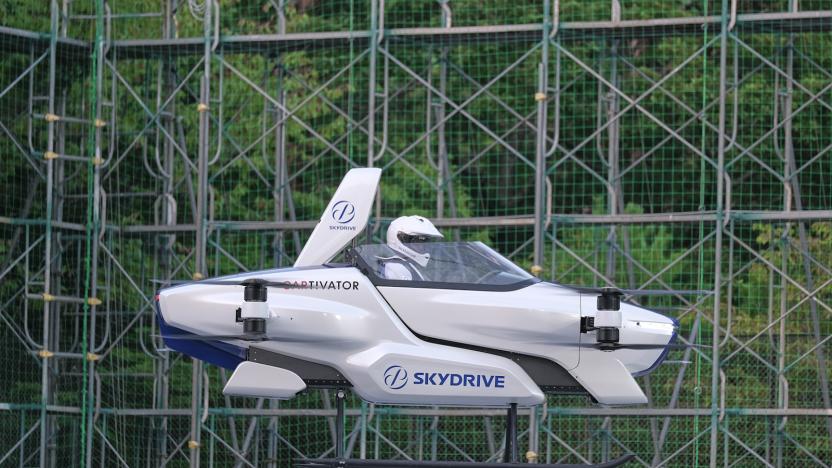
Watch a Toyota-backed flying car's first public, piloted test flight
Toyota-backed SkyDrive has conducted its first piloted test flight for a flying car, edging closer to airborne taxis.
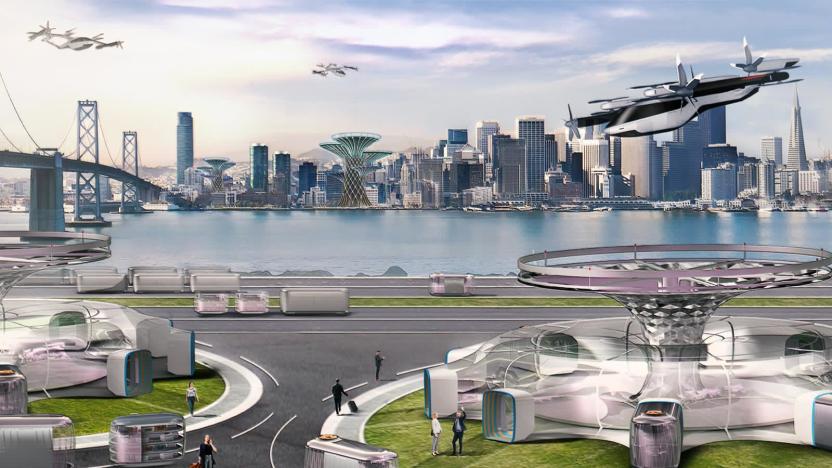
Hyundai will show off a flying car concept at CES
It wouldn't be CES without companies showing off wildly ambitious tech, and Hyundai plans to accommodate. On January 6th, the South Korean automaker will introduce the public to its first Personal Air Vehicle (PAV), as well as two other concepts: An autonomous land vehicle and a hub where passengers can transfer between the two modes of transportation.
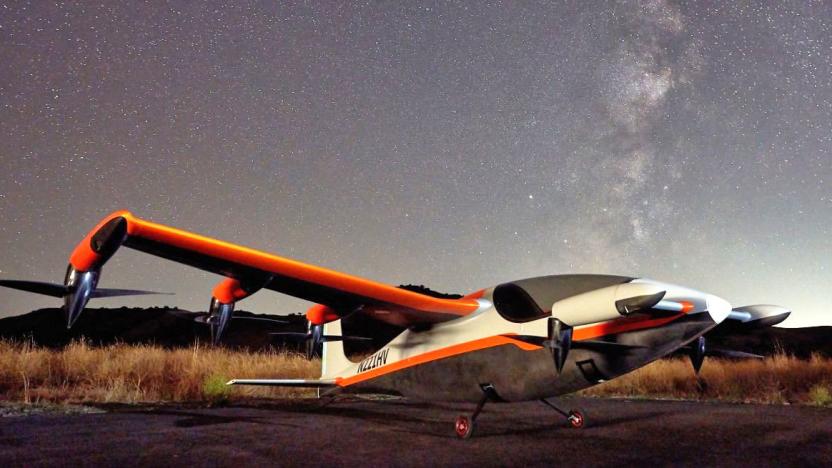
Kitty Hawk's 'Heaviside' is an ultra-quiet electric flying machine
As the field of players in "urban air mobility" (read: flying cars) get more crowded every day, the Larry Page-backed effort Kitty Hawk is trying a different approach with its latest vehicle: it's very quiet. Dubbed Project Heaviside, it's all-electric, flies like a plane but is capable of vertical take-off and landing (VTOL) like a helicopter, while being as much as 100 times quieter than a helicopter.

Hyundai hires a NASA engineer to run its new 'flying car' division
Today, Hyundai threw its hat into the Urban Air Mobility (UAM) ring. The company announced that it's working to develop its own flying vehicles. Hyundai appointed Dr. Jaiwon Shin as head of its new UAM division. Most recently, Shin led NASA's Aeronautics Research Mission Directorate. At Hyundai, Shin and his team will be tasked with developing the core technologies behind the company's flying vehicles.
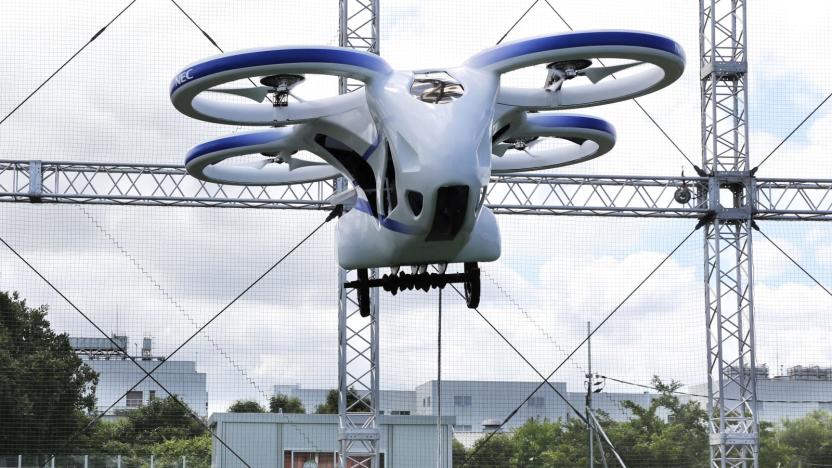
NEC's passenger drone takes a short test flight in Japan
Japan is eager to become a leader in the passenger drone industry. NEC Corp nudged the nation a step closer to that goal Monday with a demo of a people-carrying quadcopter, which stayed in the air for about a minute. The company operated the flight inside a safety cage at a test facility in Abiko, a Tokyo suburb.
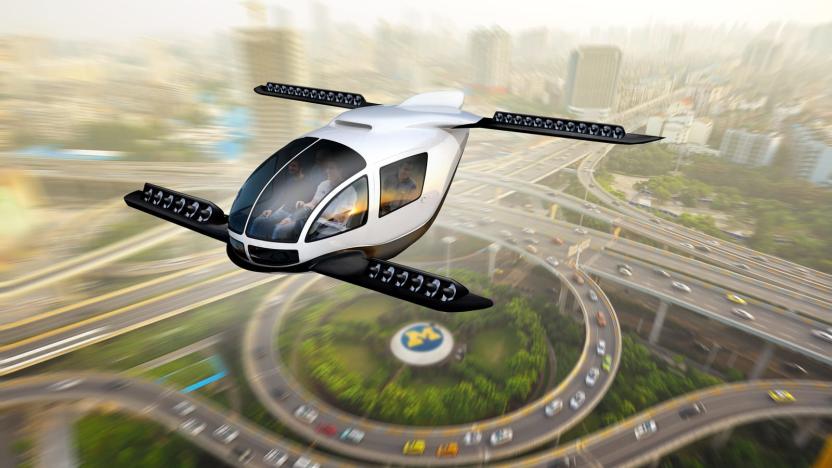
The reality of pollution kills your dream of a flying car
You might want to forget about fantasies of taking your own flying car to work, at least for now. The University of Michigan and Ford have published a study indicating that electric flying cars wouldn't be as environmentally sustainable as cars for commutes less than 22 miles. While the vehicles themselves would be clean, the high amounts of electricity needed to run those vehicles would have to come from power plants -- and many of those plants currently emit greenhouse gases.

#ICYMI: A flying roto-car, HoloLens in space and more
#fivemin-widget-blogsmith-image-974561{display:none;} .cke_show_borders #fivemin-widget-blogsmith-image-974561, #postcontentcontainer #fivemin-widget-blogsmith-image-974561{width:570px;display:block;} try{document.getElementById("fivemin-widget-blogsmith-image-974561").style.display="none";}catch(e){} Today on In Case You Missed It: Our Jetson's dreams (kinda) came true with the invention of this flying single-seater; Astronauts at the International Space Station are about to receive Microsoft's HoloLens for AR projects and general bragging-rights (take that kids, Poppa got one way before you) and Stanford scientists managed to make hydrogen gas in an entirely new way that's cheaper and more efficient. Fuel for flying cars, perhaps?

The flying car has arrived and it looks scary as hell
Deliver packages by drone? Yawn! Thorstin Crijns aims to transport people by multicopter, flying car style, and he actually built a brilliant/insane working prototype. A typical quadcopter won't cut it, so his machine has 16 separate motors and props, with a cluster of lithium-ion batteries to power it. Since weight is of the essence, the computer-optimized frame is made of lightweight 6060 aluminum. The final piece of the puzzle is the control system, and Crijns chose the MultiWii Autopilot, a well-known product that adjusts the power on each motor to keep things straight and level.

AeroMobil flying car set to take off in 2017, autonomous version to follow
AeroMobil has been around for five years, pursuing the dream of building a functional and (somewhat) practical flying car. Its third-gen prototype was revealed last October, and today at SXSW, AeroMobil CEO Juraj Vaculik revealed a bit more about the company's past and future and the challenges that remain to go from prototypes to fully fledged consumer vehicles - which the company plans to accomplish in 2017.

Choosing reality: why sci-fi author David Gerrold doesn't want a flying car
"I think we built the right future," declares David Gerrold on Expand NY's stage. "If it's a choice between the flying car or the internet, tablets and smartphones, I'll take what we've got." It's almost a shocking statement, considering the choice: Gerrold had a hand in writing episodes of The Twilight Zone, Sliders, Babylon 5, and three different Star Trek series -- not to mention dozens of original novels envisioning a future of his own. As an architect of fictional futures, his statement is almost puzzling, but as he elaborates, his true feelings become clear: He doesn't need to choose science fiction when we can build science fact.

For sale by owner: 1954 flying Taylor AEROCAR, yours now for only $1.25 million (video)
For anyone raised on the retro-futurist notion of flying cars, this literal-minded, nuts-and-bolts incarnation should make for some incredulous swooning. Looking much like a 1950's interpretation of a subcompact that wandered into the wrong alleyway and wound up in a Wright Brothers-sponsored chopshop, the Taylor AEROCAR -- one of five made -- is a very real vestige of American auto engineering's past and, more importantly, it's up for grabs. At $1.25 million, this relic of a bygone era's mainly an exorbitant lure for the deep-pocketed collector, but as a rare curiosity, it's free for all to gawk. It's a hybrid in the truest sense, melding a cozy two-seater with front wheel drive, a Lycoming O-320 4-cylinder engine and a wingspan of 30 feet, all conspiring to get it off the ground at 55mph and up to a cruising speed of 100mph. Should you want to merely take it for a test spin out on the open road and not accidentally take flight, rest assured, those mighty wings can be folded out of the way with relative ease. But that's not why you'd want to part ways with a cool chunk of cash, if you're so inclined. This bit of memorabilia's a make-good for all those broken, scifi promises from once upon a TV time. This was the future -- as ridiculous as it may seem.

Inhabitat's Week in Green: self-driving cars, solar parasols and the ultimate DIY Iron Man suit
Each week our friends at Inhabitat recap the week's most interesting green developments and clean tech news for us -- it's the Week in Green. What seems more futuristic: flying cars or self-driving cars? They both sound a bit like science fiction, but they're both getting closer to becoming a reality. In the latest chapter of Google's efforts to develop a car that uses video cameras, radar sensors and lasers to navigate through traffic, the state of Nevada just granted Google the world's first license for a computer-controlled, driverless Toyota Prius. Meanwhile, this week we also checked in on the PAL-V (which stands for "Personal Air and Land Vehicle"), a two-seat hybrid car and gyroplane that runs on gas, biodiesel or bio-ethanol. In other transportation news, the Texas Central Railroad floated a plan to build a $10-billion bullet train that would run between Houston and Fort Worth, and Toyota officially unveiled its second-generation 2012 RAV4 EV, which features a Tesla powertrain. We also saw green technology cropping up in unexpected places this week, like the $1-billion ghost town that will be built on virgin desert land in Lea County, New Mexico to test emerging green technologies. Construction on the ghost town is set to begin in late June. Milwaukee native Bryan Cera invented Glove One, a 3D-printed glove that doubles as a cell phone. And in Tokyo, participants heaved 100,000 LED lights into the Sumida River as part of the 2012 Tokyo Hotaru Festival. Although it certainly looked cool, that's a lot of LED bulbs to literally dump in the river, and it raises some questions about e-waste. GE found a more practical use for LEDs, unveiling a new LED light bulb to replace the 100-watt incandescent.

Terrafugia Transition aircraft first hands-on (video)
People used to say that cars in the '50s and '60s had fins, giant wing-like protuberances that designers grafted on to capitalize on the fledgling concepts of aerodynamics. Your fist impression of the Terrafugia Transition is much the same as standing next to a 1959 Coupe de Ville -- it's huge, and the giant vertical stabilizers on the back have a distinctly Cadillac feel. This, however, is different. Sure, it too is made in the US, but it's crafted of carbon fiber, titanium and aluminum, costs $279,000 and seats only two. Oh, and did we mention it can fly? It's making its major auto show debut this week and we got a chance to check it out. Follow us after the break for some grounded impressions.

PAL-V ONE makes maiden voyage, gives new meaning to 'Flying Dutchman' (video)
The Netherlands made a lot of noise in the tech world last year for stuff like net neutrality and the legal herping and derping between Apple and Samsung. Now it's making some noise of the whirly kind after the successful maiden flight of its very own flying car. Dutch company PAL-V christened its flying car the, uh, PAL-V ONE -- short for Personal Air and Land Vehicle. Like the Terrafugia Transition flying car, the PAL-V ONE also sports a push propeller, which it uses for forward speed. The Dutch flying car, however, doesn't have side wings and relies on an auto-rotating rotor to create lift instead. The vehicle -- which supposedly complies with all air and road traffic regulations in major markets -- chugs good, old regular gas (biodiesel and bio-ethanol versions are planned as well) for a range of 350 to 500 kilometers in the air and about 1,200 kilometers on the ground. For more adventurous land drivers, the PAL-V ONE also features a "cutting-edge system" for tilting at windmills, allowing it to power through curves like a motorcycle. See it in action in the video after the break, along with some company PR.[Thanks, Barry]

Terrafugia Transition production prototype completes first flight, set to land at NY Auto Show this Friday
Terrafugia's Transition could finally be making its way to the production line. The "flying car" has journeyed far beyond the concept phase, achieving its compulsory nod from the DOT last summer, and now reaching production prototype status. On March 23rd, the latest Transition flew past one more hurdle, completing its first airborne trial. The hybrid vehicle rolled down the runway at Plattsburgh International Airport in New York before ascending to 1400 feet -- the entire flight lasted a mere eight minutes, and marks the first of six planned phases of flight testing during the aircraft's voyage past experimental stage. There's still no word on when the Light Sport Aircraft will be making its way to soon-to-be Transition owners, but those hankering for a preview can catch a glimpse of the craft at the New York Auto Show from April 6th through the 15th. You can also taxi past the break for a tail-level view of the test plane's trek to takeoff.













